Related Research Articles

Henry James Byron was a prolific English dramatist, as well as an editor, journalist, director, theatre manager, novelist and actor.

Thomas William Robertson was an English dramatist and stage director known for his development of naturalism in British theatre.

Edward Askew Sothern was an English actor known for his comic roles in Britain and America, particularly Lord Dundreary in Our American Cousin. He was also known for his many practical jokes.
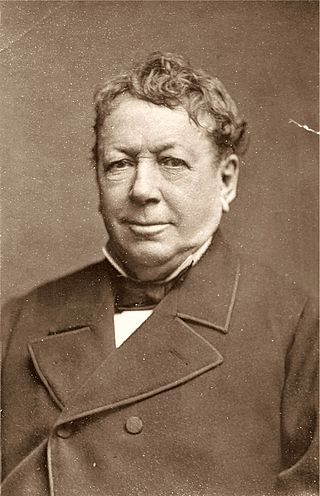
John Baldwin Buckstone was an English actor, playwright and comedian who wrote 150 plays, the first of which was produced in 1826.
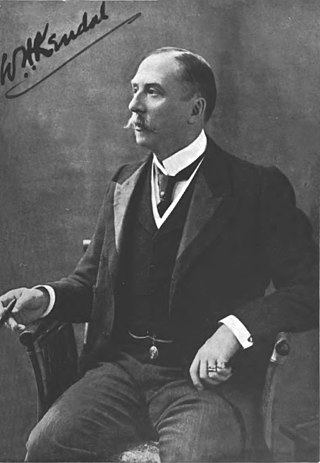
William Hunter Kendal was an English actor and theatre manager. He and his wife Madge starred at the Haymarket in Shakespearian revivals and the old English comedies beginning in the 1860s. In the 1870s, they starred in a series of "fairy comedies" by W. S. Gilbert and in many plays on the West End with the Bancrofts and others. In the 1880s, they starred at and jointly managed the St. James's Theatre. They then enjoyed a long touring career.

Dame Madge Kendal was an English actress of the Victorian and Edwardian eras, best known for her roles in Shakespeare and English comedies. Together with her husband, W. H. Kendal , she became an important theatre manager.
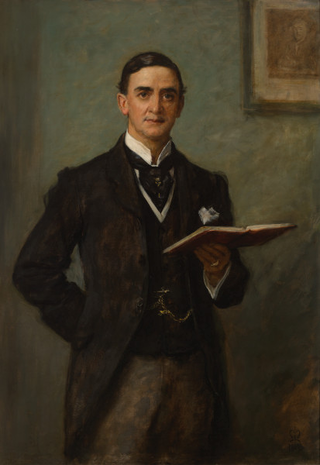
Sir John Hare, born John Joseph Fairs, was an English actor and theatre manager of the later 19th– and early 20th centuries.

Marie Effie Wilton, Lady Bancroft (1839–1921) was an English actress and theatre manager. She appeared onstage as Marie Wilton until after her marriage in December 1867 to Squire Bancroft, when she adopted his last name. Bancroft and her husband were important in the development of Victorian era theatre through their presentation of innovative plays at the London theatres that they managed, first the Prince of Wales's Theatre and later the Haymarket Theatre.

Pygmalion and Galatea, an Original Mythological Comedy is a blank verse play by W. S. Gilbert in three acts based on the Pygmalion story. It opened at the Haymarket Theatre in London on 9 December 1871 and ran for a very successful 184 performances. It was revived many times, including an 1883 production in New York starring Mary Anderson as Galatea.

Julia Emilie Neilson was an English actress best known for her numerous performances as Lady Blakeney in The Scarlet Pimpernel, for her roles in many tragedies and historical romances, and for her portrayal of Rosalind in a long-running production of As You Like It.
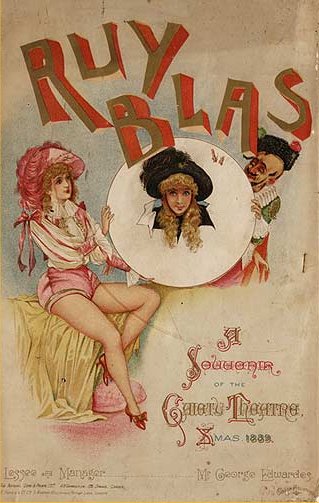
Victorian burlesque, sometimes known as travesty or extravaganza, is a genre of theatrical entertainment that was popular in Victorian England and in the New York theatre of the mid-19th century. It is a form of parody in which a well-known opera or piece of classical theatre or ballet is adapted into a broad comic play, usually a musical play, usually risqué in style, mocking the theatrical and musical conventions and styles of the original work, and often quoting or pastiching text or music from the original work. Victorian burlesque is one of several forms of burlesque.
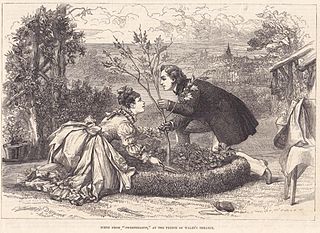
Sweethearts is a comic play billed as a "dramatic contrast" in two acts by W. S. Gilbert. The play tells a sentimental and ironic story of the differing recollections of a man and a woman about their last meeting together before being separated and reunited after 30 years.

Galatea, or Pygmalion Re-Versed is a musical burlesque that parodies the Pygmalion legend, and specifically W. S. Gilbert's 1871 play Pygmalion and Galatea. The libretto was written by Henry Pottinger Stephens and W. Webster. The score was composed by Wilhelm Meyer Lutz.

Henrietta Hodson was an English actress and theatre manager best known for her portrayal of comedy roles in the Victorian era. She had a long affair with the journalist-turned-politician Henry Labouchère, later marrying him.

Marion Bessie Terry was an English actress. In a career spanning half a century, she played leading roles in more than 125 plays. Always in the shadow of her older and more famous sister Ellen, Terry nevertheless achieved considerable success in the plays of W. S. Gilbert, Oscar Wilde, Henry James and others.

Amy Roselle, born Amy Louise Roselle Hawkins was an English actress who performed in Britain, the US and Australia. She specialised in Shakespearean roles but also played parts in contemporary dramas. She married Arthur Dacre, and the two toured together with their own theatre company, eventually traveling to Australia. In a murder-suicide pact, her husband shot her dead in 1895.

May Fortescue was an actress, singer and actor-manager of the Victorian era and a protégée of playwright W. S. Gilbert. She was a member of the D'Oyly Carte Opera Company from 1881 to 1883, when she left the company following her engagement to a nobleman, young Arthur Cairns, Lord Garmoyle. Cairns soon broke off the engagement under pressure from his friends, and Fortescue returned to the stage in leading roles.

La Vivandière; or, True to the Corps! is a burlesque by W. S. Gilbert, described by the author as "An Operatic Extravaganza Founded on Donizetti's opera, La figlia del regimento." In the French or other continental armies a vivandière was a woman who supplied food and drink to troops in the field.

Janette Steer was an actress, playwright, theatrical manager, and suffragist based in London.
Carlotta Addison was an English actress. Stage appearances included leading roles in original productions of plays by T. W. Robertson, W. S. Gilbert, H. J. Byron and Arthur Wing Pinero.
References
- 1 2 Portraits of Sophie Larkin at the National Portrait Gallery, London
- 1 2 3 4 "Larkin, Sophie". Charles E Pascoe, editor. The Dramatic List: a record of the performances of living actors and actresses of the British stage. 1880.
- ↑ George Taylor. Players and Performances in the Victorian Theatre. Manchester University Press, 1989. Page 113
- ↑ Scott, Clement. "Our Play-Box", The Theatre , March 1, 1882, p. 167
- ↑ "Longest Running Plays in London and New York" Stagebeauty.net. Retrieved 26 December 2021.
- ↑ "Pygmalion and Galatea, by W. S. Gilbert", The Gibert and Sullivan Archive. Retrieved 26 December 2021.
- ↑ "Fatal Card" Theatricalia. Retrieved 26 December 2021.
- ↑ Obituary The Bulletin , Vol. 24 No. 1235 (15 October 1903), via Trove.